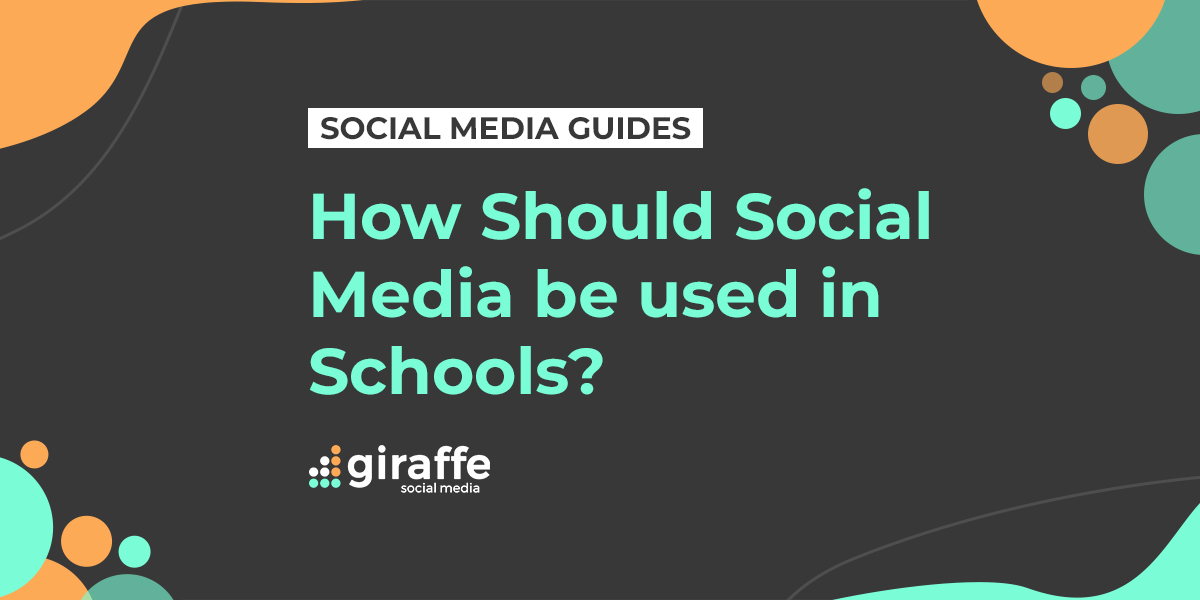How should social media be used in schools?
1. Connecting students and teachers on a monitored platform.
2. Teaching through online videos, e-books, and other resources.
3. Immersing students in using social media for educations.
As a general public, we love social media. It’s a fun, easy way to spread an opinion or share a joke, but also to learn new things! So why are we not using it to its full advantage in schools?
The beauty of social media is that you really can find anything you’re looking for, which includes valid educational resources! From courses on YouTube and LinkedIn Learning, to established companies sharing their knowledge on social media, there will always be educational content out there to suit you. This can definitely be applied in schooling, using these freely available resources to aid lesson planning and educational content.
How Social Media Could Help in Schools
Plenty of teachers come and go during school life, but the ones that stick with you are usually the teachers who took the time to be approachable, helpful, and friendly. While they teach many students over the years, a good teacher makes every student feel seen and important.
Social media could be used to help improve this valuable aspect of school life, by allowing each teacher to have their own professional Twitter account – or to share a departmental Twitter account – so if needed they could be easily accessible to students. They could post lesson recaps, answer homework questions, and also allow students to tweet what they’ve learned to the teacher account (abiding by the 280-character count, of course!)
This could allow the students to feel a lot more connected to the teacher in question but still keep the barrier between students’ and teachers’ personal lives, as the account would be professional and separate from their personal, private accounts. It will allow students to see that teachers have a life outside school and don’t just sleep in the stationery cupboard; they are every bit as human as the students they teach.
Using Online Material in Teaching
Video content is one of the most popular types of content on social media. YouTube is the second-largest search engine in the world, with over 3 billion searches every month and 100 hours of video content uploaded every minute.
Video usage within the learning environment is a great idea, as it helps to break the day up and make the environment more fun and interactive. In class, video content could be used to help to keep the students alert, as listening to a teacher talk continuously for an hour isn’t the easiest thing to follow, especially when your mind starts to drift! Educational videos from multiple content creators will benefit students by utilising diverse, expert sources.
With the COVID-19 Pandemic and a major shift to online/virtual learning, pre-prepared video content is more useful in the educational environment than ever before. YouTube allows users to curate and share playlists, and access other public playlists, which is a perfect way to share useful educational videos from teachers to students. Schools could also create their own YouTube account to share recorded lessons or lectures to not just their students but to a large audience – as long as video participants consent to the video being shared!
Additionally, other educational online resources such as e-books, courses, and more can be used in and out of the classroom to help kids learn. There are countless resources available, so teachers have a vast library of useful educational information to choose from when planning online content for their students.
The Advantages of Using Social Media in Schools
The advantages of using social media within schools seem to all point in the same direction; many young people today are immersed within social media and the Internet – 75% of young people claim that they “cannot live” without the Internet! The use of it in an educational context will certainly encourage enthusiasm and interaction within their work.
Social media allows an easy way for students to express their viewpoints, ask questions, and discuss issues. Social media is a great advantage especially to those who may to be too timid to participate in the classroom environment. It provides easy access for students to be involved in class discussions without being too embarrassed to raise their hand or speak up, especially in the context of virtual classrooms.
Schools implementing social media into their learning will also need a robust social media policy to safeguard students and staff. With this monitored regulation, the advantages are endless and illustrate a new way of learning within schools.
As an added bonus, having active social media accounts is a good move for schools, colleges, and universities to boost their reputation and encourage applicants. It’s no secret that nowadays, we prefer to see human interactions with brands, companies, and organisations on social media – it helps us feel connected and cared about. Students of the educational institution will feel more connected to their school through the use of social media.
Editor’s note: This article was originally published in May 2013, and has been edited and updated for republishing in March 2021.





